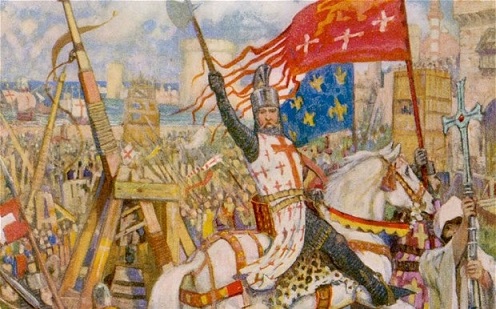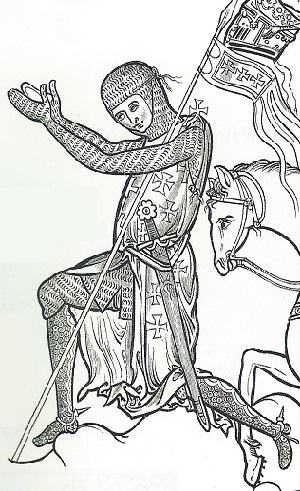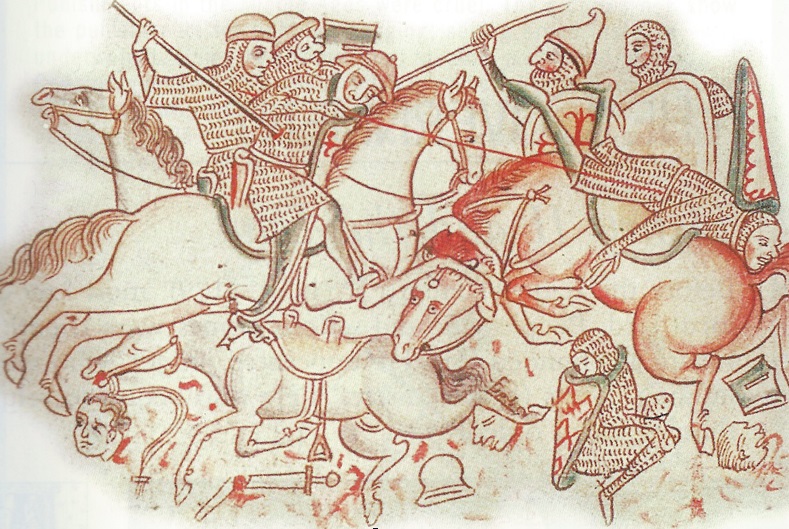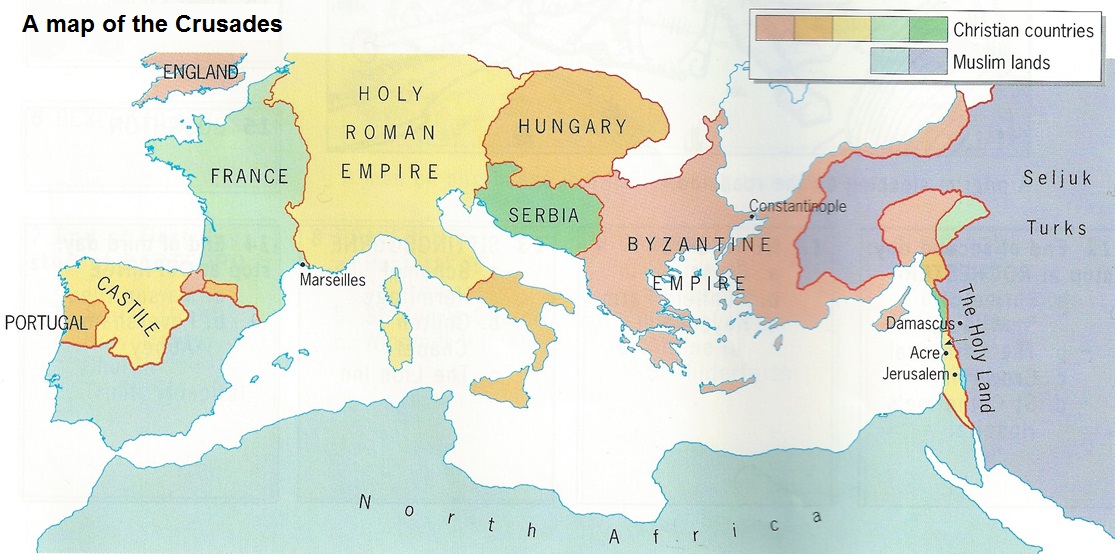
The Crusades

Introduction – The Story of the Crusades
Jerusalem was the Holy City of the Christian religion, but it was part of the Turkish empire, and the Turks were Muslims.
In 1095, the Pope asked the people of Europe to go on a crusade to conquer the Holy Land for Christianity. Over the next four hundred years, thousands of Christians went to fight the Muslims:
|
1096 |
1st Crusade |
An army of peasants, led by Peter the Hermit, set off to the Holy Land. The army was massacred by the Turks. |
|
1096-99 |
1st Crusade |
An army of knights captured Jerusalem (1099). The crusaders massacred the Muslims. |
|
1145-49 |
2nd Crusade |
King Louis VII of France tried to capture more of the Holy Land. The crusaders' army was defeated at Damascus. |
|
1187 |
|
Saladin, the new Muslim leader, recaptured Jerusalem. |
|
1189-92 |
3rd Crusade |
Led by King Richard I of England ('Richard the Lionheart'), the crusaders captured the port of Acre, but failed to take Jerusalem. On his way home, Richard was imprisoned and held to ransom. |
|
1202 |
4th Crusade |
The crusaders ran out of money, so they destroyed the Christian city of Constantinople instead of going to Jerusalem. |
|
1212 |
Children's Crusade |
Led by Stephen of Cloyes, a 12-year-old shepherd-boy, the children walked to Marseilles in France. Two merchants (called Iron Hugh and William the Pig) offered to take them to the Holy Land Instead, they sailed to North Africa, and sold the children into slavery. |
|
1217-50 |
5th, 6th and 7th Crusades |
There were many small expeditions, but they all failed. |
|
1268-91 |
|
The Turks recaptured the Holy Land. Acre, the last crusader castle, fell in 1291. |
|
1396 |
The Last Crusade |
An army of Hungarian and French knights was massacred. |
|
1453 |
|
The Turks captured Constantinople. All Christian influence in the Middle East was ended. |
Study these Sources, then answer the question sheet by clicking on the 'Time to Work' icon at the top of the page.
Links:
The following websites will help you research further:
Medieval Crusades:
•
Mr Donn's site
•
BBC Bitesize
• Crash Course on the Crusades: Pilgrimage or Holy War? - frantic!
• Musical fun from
HistoryTeachers
1 Richard the Lionheart
A drawing of Richard the Lionheart on Crusade, from an English children's book.

Some crusaders joined orders of knights such as the Knights of the Hospital of St John, and the Knights Templars. They took vows of poverty and chastity and lived holy lives. The Hospitallers' order still survives today as the St John's Ambulance Brigade.
2 A Knight Templar
A drawing of a crusader from the thirteenth century.

Why go on Crusade?
There were many reasons why people went on crusade. Some were genuinely religious men. Also, the Pope promised all crusaders forgiveness for their sins; this was important for knights who had killed people in battle, and believed that they were going to hell. Other knights actually went to kill and steal – at home, kings encouraged the most violent nobles to go on crusade, because it got them out of the country!
To go on a crusade was adventure. The Holy Land was full of different sights and unknown goods. Young knights could prove how brave they were. Sometimes the younger son of a great lord – who did not expect to inherit his father's lands – would go on crusade to win land. Villeins joined the crusades, because the Pope promised them freedom if they went to fight.
3 The Wars of the Crusades
A drawing from the 14th century. The wars of the crusades were violent and bitter, and both the crusaders and the Muslims were often very cruel.

Results of the Crusades
In the East, the crusaders discovered all sorts of things they had never seen before, such as lemons, apricots, sugar, silk and cotton. They discovered new spices (used in cooking) and new perfumes. While the crusaders were fighting the Muslims, European merchants were sailing to the Holy Land and trading with the Muslims for these goods!
The crusaders realised that in some ways the Muslims were more civilised than the Europeans. The Muslims knew much more about medicine. They were also better at mathematics: Arabic numbers (1, 2, 3, 4. etc.) were easier to use than Roman numerals (I, II, III, IV, etc.).
The Muslims knew more about geography. In the Holy Land, the crusaders heard about unknown lands in the Far East, and they realised that the world was a bigger place than they had thought. In 1275 a European, Marco Polo, visited China.
The crusades led to improvements in armour and castle design in the West. One Chinese invention that found its way to Europe was gunpowder – a discovery that changed warfare.
Then, in 1492, Christopher Columbus tried to find a new way to bring spices from the Far East to western Europe without going through Muslim lands. He used Muslim mathematics to work out the size of the earth, and Muslim geography to find a way to sail west to China. As a result, he discovered America ... and 1492 is often said to be the date when the Middle Ages came to an end.
